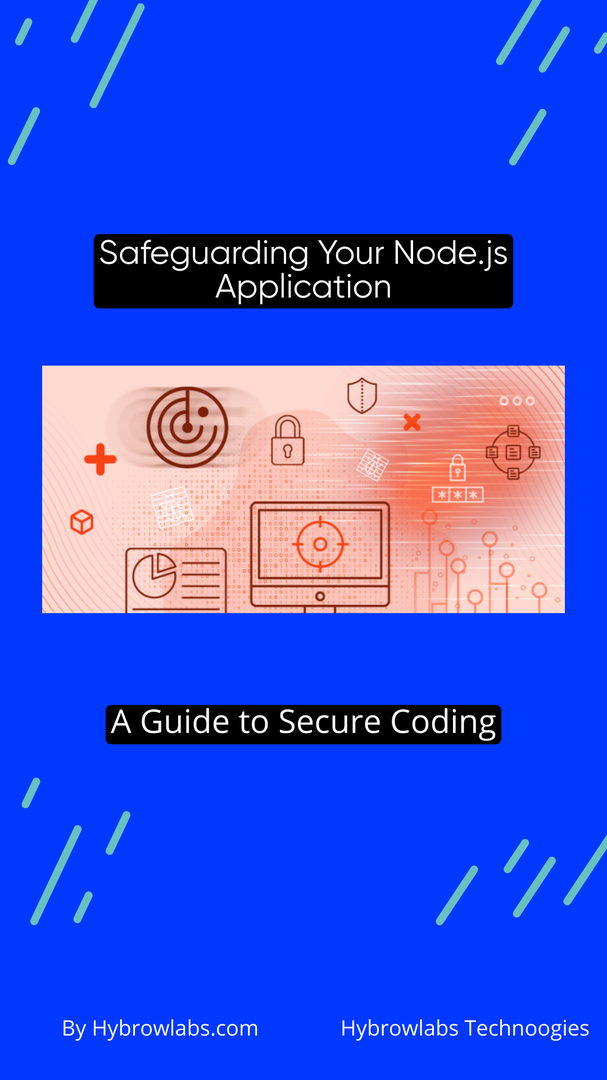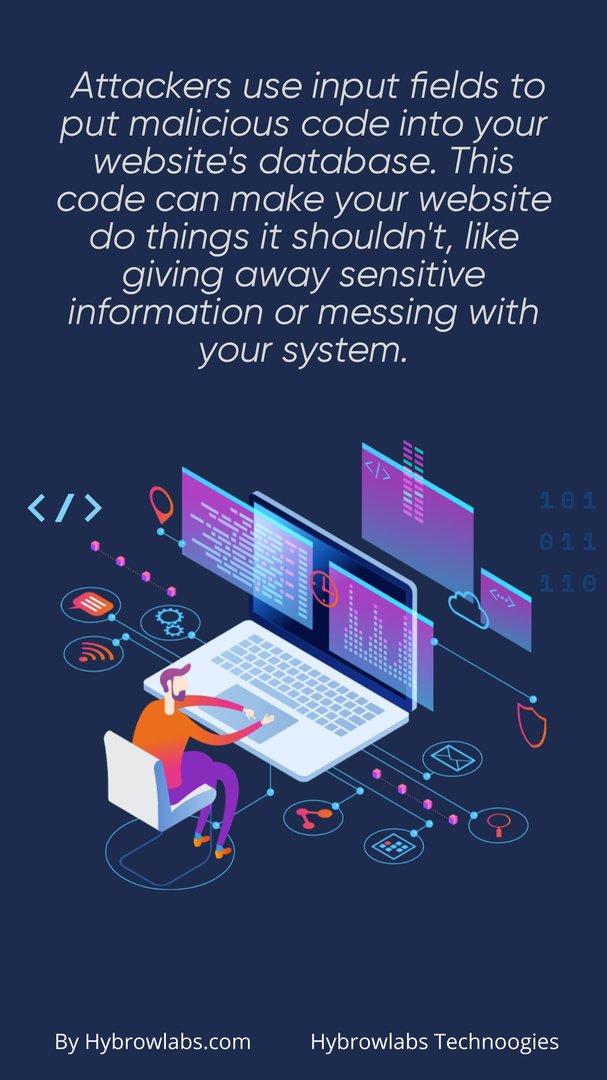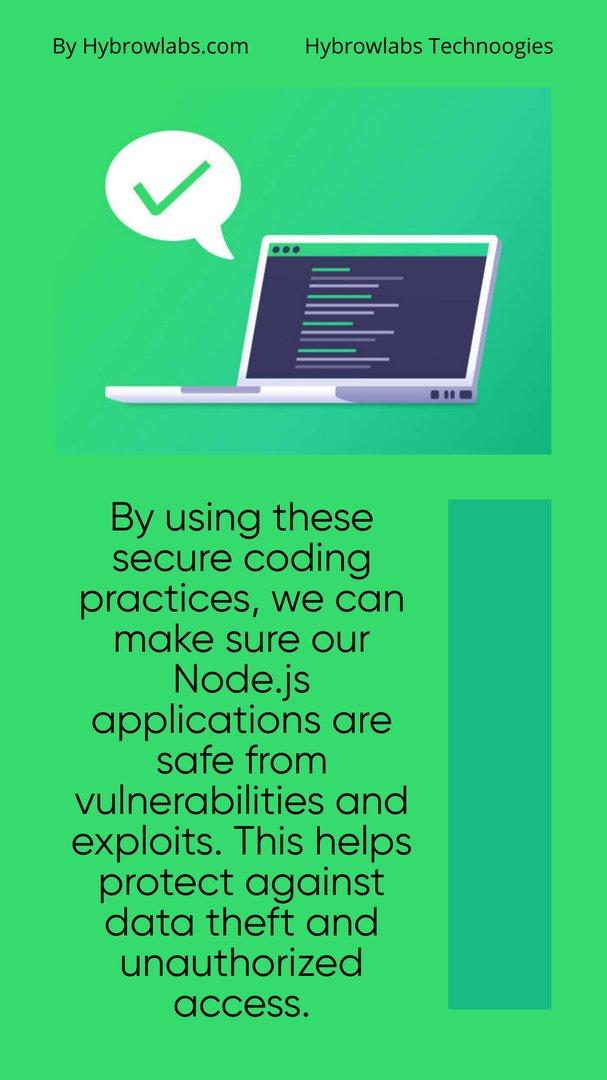Introduction:

Node.js is a widely-used open-source framework for building high-performance, scalable web applications. However, as with all software development, ensuring security is critical, and employing robust coding practices is essential for guarding against potential threats.
In this piece, we'll discuss some of the most fundamental secure coding practices for Node.js applications: input validation, access control, error handling, data encryption, and secure communication. By adhering to these practices, developers can bolster the security of their Node.js applications and minimize the likelihood of security breaches and data theft. Moreover, the article will furnish practical illustrations and optimal practices for implementing these practices in Node.js applications.
Understanding Secure Coding Practices:
Secure coding practices refer to writing code that can withstand malicious attacks. It encompasses a collection of principles, guidelines, and techniques that aid developers in creating secure software. The importance of secure coding practices lies in their ability to safeguard applications against vulnerabilities and exploits that malicious actors can utilize to gain unauthorized access to sensitive information.
1. Input Validation:

By requiring input authentication, a Node.js application may be sure that any data or user input it receives is safe and complies with predetermined rules and guidelines. It is an essential security measure to protect against common vulnerabilities like SQL injection and cross-site scripting (XSS). Input authentication reduces the likelihood that malicious input can cause harm by ensuring that only the anticipated application acknowledges safe input.
Best practices for input validation
Recommended approaches for input authentication involve the following methods:
- Input Sanitization:
This operation eliminates any symbols or entities that could potentially cause damage to the application or its users. It includes removing HTML tags, exceptional characters, and other potentially hazardous elements. Sanitization can be accomplished through libraries such as DOMPurify or InputSanitizer.
- Input Validation Libraries:
Node.js provides several libraries for input authentication, including Joi, Yup, and Validator.js. These libraries offer pre-built validation functions that can be utilized to examine inputs for different standards, such as data type, length, and format.
Examples of joint input validation
Some typical susceptibilities in input authentication comprise the following:
- SQL Injection happens when aa perpetrator incorporates harmful SQL code into an input field, authorizing them to execute unsanctioned commands on the database. To prevent SQL injection, developers should utilize parameterized inquiries and avoid using unprocessed user input in SQL statements.
- Cross-Site Scripting (XSS) happens when a perpetrator inserts malicious code into a web page through an input field. To prevent XSS, developers should cleanse all input fields to eliminate script tags and other potentially risky elements.
By implementing good input validation techniques, developers can ensure that their Node.js applications are secured from ordinary susceptibilities and that the application approves only secure input.
2. Authentication and Authorization:
Authentication refers to the verification process of a user's identity, while authorization pertains to allowing access to particular resources or actions based on that identity. Developers can guarantee that only authorized users can access critical information and functions by implementing appropriate practices for authentication and authorization.
Best practices for implementing authentication and authorization
To implement authentication and authorization effectively in Node.js applications, developers should adhere to the following best practices:
- Use secure authentication methods like OAuth 2.0 or JSON Web Tokens (JWTs) to protect user credentials while transmitting them.
- Enforce strong password policies, including requirements for password length, complexity, and expiration.
- Use multi-factor authentication (MFA) to add additional protection by requesting several forms of identity from users, such as a password and a verification code given by SMS.
- Utilize Role-Based Access Control (RBAC) to allow administrators to define specific roles and permissions for different types of users, guaranteeing that users can only access the resources they require to perform their tasks.
Examples of standard authentication and authorization
Common vulnerabilities in authentication and authorization include:
- Brute force attacks occur when a user's password is repeatedly tried until it is successfully guessable. To counter brute force assaults, developers should add rate restrictions and account lockout procedures.
- Attackers who acquire a user's session ID can access their account without the user's password, thanks to a technique known as session hijacking. To prevent session hijacking, developers should employ secure session management techniques, such as rotating session IDs and cookies.
By implementing these best practices, developers may safeguard their Node.js applications from standard authentication and authorization vulnerabilities and ensure that only authorized users can access sensitive data and functionality.
3. SQL Injection Prevention:

Cyberattacks in the form of SQL injection exist in which a perpetrator inserts harmful SQL code into an input field or parameter, allowing them to execute unapproved commands on a database. Such attacks can cause severe harm to Node.js applications, including but not limited to data breaches, unauthorized access to sensitive information, and even system malfunction.
Best practices for preventing SQL injection
The following are recommended best practices for avoiding SQL injection attacks in Node.js applications:
- Utilize Parameterized Queries: Parameterized queries enable Node.js apps to provide user input to a SQL statement as a parameter rather than concatenating it into the query. This strategy prevents attackers from introducing destructive code into SQL statements and appropriately sanitizes user input.
- Employ ORM Libraries: By abstracting SQL queries and taking care of parameterization automatically, Object-Relational Mapping (ORM) libraries like Sequelize or TypeORM can also aid in preventing SQL injection attacks.
As already established, input validation is a crucial security procedure that can assist in stopping SQL injection attacks by ensuring that the application receives only legitimate and expected input.
Examples of joint SQL injection
Examples of widespread SQL injection vulnerabilities are as follows:
- Concatenating user input into a SQL statement creates a vulnerability attackers can exploit to insert malicious code. Always utilize parameterized queries or ORM frameworks when developing software to avoid this.
- Poorly Configured Database Permissions: In some circumstances, attackers can use improperly configured database permissions to obtain unauthorized access to a database. The security of sensitive data should be securely protected, and database users should have the minimal degree of access necessary to complete their tasks.
Developers may help defend their Node.js apps from SQL injection attacks and reduce the risk of data breaches and other security concerns by applying these recommended practices and looking for potential vulnerabilities.
4. Cross-Site Scripting Prevention:
Cross-Site Scripting (XSS) attacks are a cyber attack genre where an assailant inserts malicious code into a webpage or application, frequently in JavaScript form. It authorizes the attacker to execute unapproved commands within a user's browser. Such attacks can have far-reaching implications on Node.js applications, potentially causing data piracy, unauthorized access, and even system malfunction.
Best practices for preventing XSS attacks
The following are recommended techniques for preventing XSS attacks in Node.js applications:
- Input validation is essential to preventing XSS attacks, just like other security procedures. Developers may stop attackers from introducing dangerous code by validating user input and ensuring it only contains expected and safe characters.
- Output encoding: To ensure that any user input displayed on a web page is correctly encoded and cannot be used as code, developers should also employ output encoding techniques, such as HTML encoding.
- Employ reputable libraries and frameworks: When developing software, developers should use reputable libraries and frameworks, such as Helmet or CSP, which can thwart XSS assaults by putting additional security measures in place.
Examples of common XSS vulnerabilities
Common examples of XSS vulnerabilities include the following:
- Reflected XSS: An attacker can insert malicious code into a web page by taking advantage of a weakness in the application's input validation. Developers should incorporate effective input validation and output encoding methods to prevent this.
- Stored XSS: This kind of vulnerability occurs when an attacker introduces harmful code into a web page or application, which is subsequently stored on the server and executed each time the page is loaded. To prevent this, developers should adopt effective input validation practices and guarantee that user-created content is correctly sanitized before being saved on the server.
By proactively searching for potential vulnerabilities and implementing these best practices, developers can help safeguard their Node.js applications against XSS attacks, reducing the likelihood of data breaches and other security hazards.

Conclusion:
Safeguarding Node.js applications from cybersecurity risks and other security threats necessitates secure coding procedures. Hybrowlabs' development team has extensive experience in developing secure Node.js applications, adhering to best practices such as input validation, authentication and authorization, SQL injection prevention, and cross-site scripting prevention.
In this article, we have highlighted the significance of these best practices and offered examples of typical vulnerabilities and how to avert them. As a call to action, we encourage all developers operating with Node.js applications to integrate these best practices in their initiatives. By prioritizing security during the development process, we can assist in creating a safer and more secure digital environment for everyone.
FAQ's:
1. What are some typical security issues that Node.js apps face?
SQL injection attacks, cross-site scripting (XSS) attacks, unsecured user authentication and authorization, and susceptible third-party modules are some common security threats connected with Node.js applications.
2. With a Node.js application, how should input validation be done the best?
A Node.js application can integrate input validation using libraries like Joi, express-validator, or validator.js. These libraries offer tools for cleaning user data and validating input.
3. What role does employing parameterized queries have in guarding against SQL injection attacks?
Parameterized queries prevent SQL injection attacks by separating SQL commands from user input. Parameterized queries use placeholders in SQL statements and link user input to those placeholders rather than concatenating user input directly into SQL queries. It ensures that user input is regarded as data rather than executable code.
4. In a Node.js application, how may cross-site scripting assaults be stopped?
In a Node.js application, output encoding utilities like escape HTML and encodeURI help stop cross-site cripting attacks. Before being displayed in the application, these routines sanitize user input to stop harmful scripts from running.
5. Which best practices should a Node.js application follow when implementing secure authentication and authorization?
Robust encryption techniques, salting and hashing user passwords, session management, rate limitation to prevent brute-force attacks, and multi-factor authentication are best practices for establishing secure authentication and authorization in a Node.js application.



59be95.png)


a3dc85.jpg)

.jpg)
fd8f11.png)


.jpg)
.jpg)